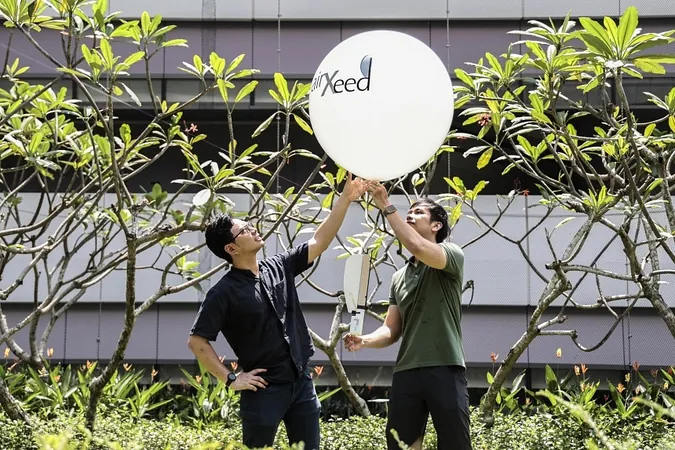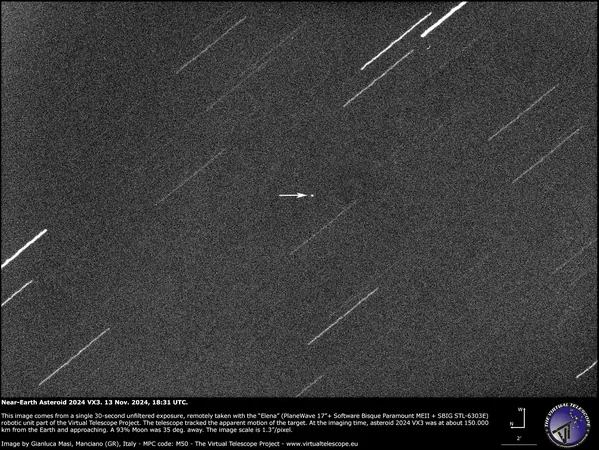
Innovative Duo Wins James Dyson Award for Revolutionary Weather Device Inspired by Nature
2024-11-13
Author: John Tan
SINGAPORE
Nature often serves as the best teacher, and two researchers from the Singapore University of Technology and Design (SUTD) are proof of that. Post-doctoral fellows Shane Kyi Hla Win, 33, and Danial Sufiyan Shaiful, 32, were inspired by the ingenious design of the maple seed, which glides gracefully to the ground, to create a revolutionary technology that addresses the growing problem of electronic waste in weather forecasting.
Maple seeds are not just charming elements of nature; their unique structure allows them to slow down their descent and travel further by spinning like helicopter blades. Captivated by this natural phenomenon, Win and Shaiful devised the airXeed Radiosonde, an innovative solution aimed at minimizing the e-waste generated by traditional weather monitoring methods.
Each year, approximately one million radiosondes are released globally, costing about $190 million and resulting in a staggering 48 tonnes of e-waste—equivalent to the weight of about 24 cars. These small devices, crucial for measuring atmospheric conditions, often end up in remote and inaccessible areas after their weather balloons burst at high altitudes, creating significant environmental challenges.
The duo's groundbreaking design not only clinched the esteemed James Dyson Award for sustainability on November 13, 2024, but also stood out among nearly 2,000 entries worldwide, winning a prize of $50,500. "Winning this award is a monumental step towards transforming our concept of airXeed Radiosonde into a practical solution that significantly reduces e-waste while enhancing weather monitoring efficiency," said Danial, sharing their excitement.
The airXeed Radiosonde is designed to be retrievable and reusable, mitigating the environmental impacts associated with conventional devices. By applying clever engineering inspired by the maple seed’s flight capabilities, their invention can spiral down safely to designated collection areas. This ensures easier retrieval and promotes a sustainable approach to weather data collection.
Equipped with advanced features such as automatic switching between flight modes—autorotation and diving—the airXeed is smart enough to avoid potential collisions with aircraft. Moreover, its onboard controller utilizes machine learning to stabilize its flight path, ensuring a safe landing near predefined zones for collection. Made from sustainable materials like balsa wood and foam, the device emphasizes repairability, allowing for easy recycling of worn-out parts.
Sir James Dyson himself lauded the duo's ingenious design, stating: "This is a reusable weather detector that not only saves on environmental waste but also offers substantial cost savings. It’s an exceptionally clever solution for a pressing problem."
The award also spotlights Olivia Humphrey, a 24-year-old designer from Ireland who received the prize in the medical category for her innovative scalp cooling device designed to protect chemotherapy patients from hair loss.
Win and Shaiful plan to channel their prize money into further developing the airXeed Radiosonde, as they seek collaborations with weather stations and manufacturers for practical trials. Their vision includes refining the design to ensure it can be adopted widely, potentially transforming the meteorological industry.
As global concerns over e-waste and environmental sustainability escalate, innovations like the airXeed Radiosonde remind us of the profound impact that nature-inspired designs can have in shaping a more sustainable future. The duo’s work not only addresses a critical issue but also paves the way for a greener tomorrow.


 Brasil (PT)
Brasil (PT)
 Canada (EN)
Canada (EN)
 Chile (ES)
Chile (ES)
 España (ES)
España (ES)
 France (FR)
France (FR)
 Hong Kong (EN)
Hong Kong (EN)
 Italia (IT)
Italia (IT)
 日本 (JA)
日本 (JA)
 Magyarország (HU)
Magyarország (HU)
 Norge (NO)
Norge (NO)
 Polska (PL)
Polska (PL)
 Schweiz (DE)
Schweiz (DE)
 Singapore (EN)
Singapore (EN)
 Sverige (SV)
Sverige (SV)
 Suomi (FI)
Suomi (FI)
 Türkiye (TR)
Türkiye (TR)